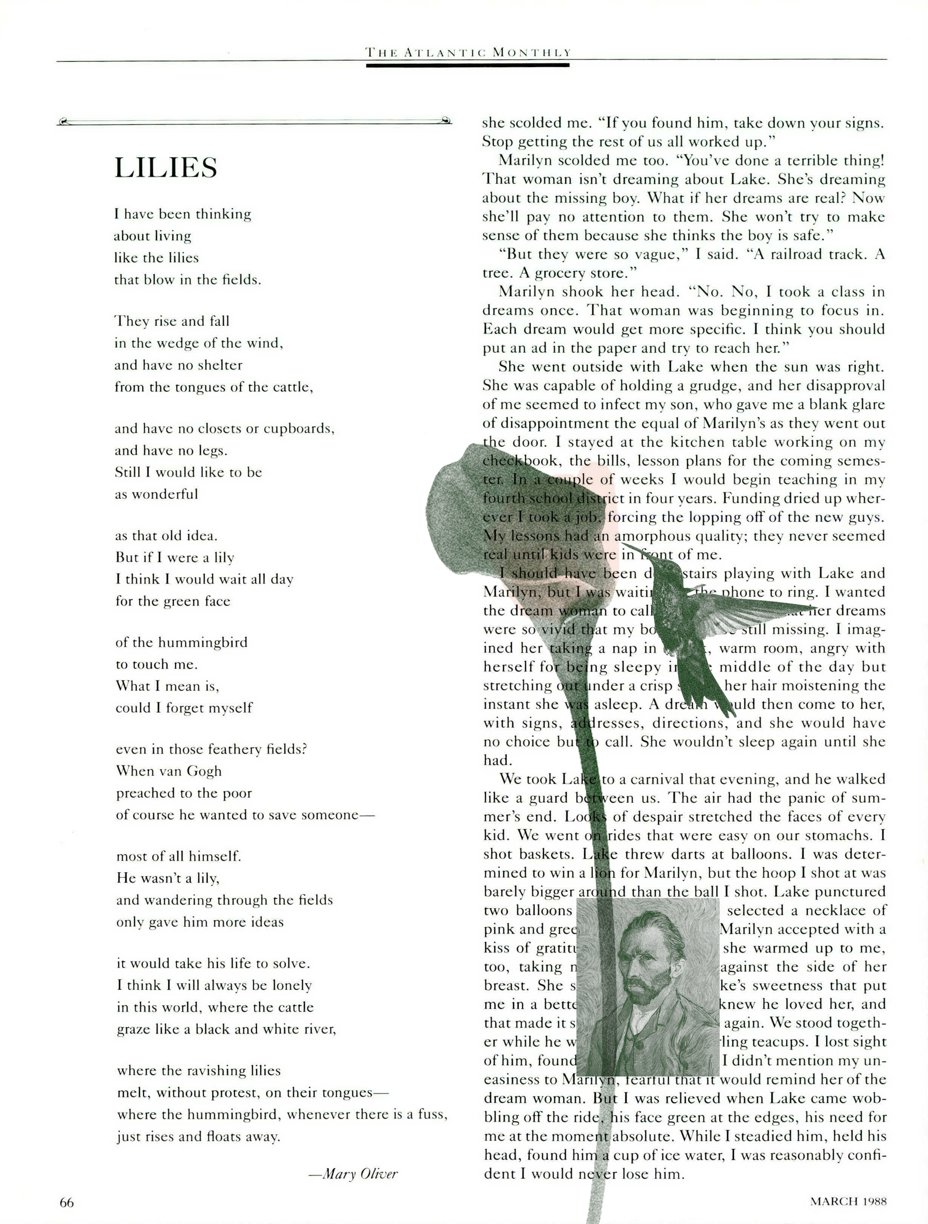
The poet Mary Oliver was a legendary observer of nature. She chronicled scuttling hermit crabs and mossy hollows, “freshets of wind” and the “wild, clawed light” of the sun.
Her reverence for the natural world was clear—not just because she described it so frequently, but because of her exquisite detail. Oliver wrote with the kind of precision that came from the heightened attention of deep love. Indeed, she said that discovering the woods around her Ohio home—as a child enduring grave hardship—saved her life.
Oliver’s work isn’t just about flora and fauna, though; it’s about how people relate to nature. When her poems paint the living things of this world, she herself is part of the picture—seeing, smelling, hearing, writing. In “Lilies,” her presence is explicit. As lovely as the flowers are, she can’t relate to their detachedness. If she were one, she wrote, “I think I would wait all day / for the green face / of the hummingbird / to touch me.”
It’s this hunger—for connection, for meaning, for answers—that makes us human, Oliver implies. Admittedly, it sounds nice to live like a lily, melting “without protest” on a cow’s tongue. But this poem makes me feel a funny kind of pride to be part of our ever-suffering species. The most human qualities, the ones that can make us feel so lonely, also drive us to think and create. Perhaps they once drove a little girl to wander into the Ohio woods, and to look for words to capture what she found.

You can zoom in on the page here.

!["[T]he First and Fifth Amendments Require ICE to Provide Information About the Whereabouts of a Detained Person"](https://images.inkl.com/s3/publisher/cover/212/reason-cover.png?w=600)





